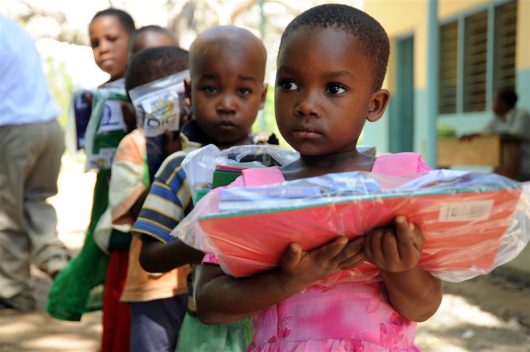What’s Hindering Girls’ Education in Tanzania?
 Tanzania is the 25th poorest country in the world but has one of the world’s largest populations. Families struggle to provide for their children on a daily basis. Some consider schooling to be the way out of poverty, but education, especially girls’ education in Tanzania, is expensive and inaccessible to many.
Tanzania is the 25th poorest country in the world but has one of the world’s largest populations. Families struggle to provide for their children on a daily basis. Some consider schooling to be the way out of poverty, but education, especially girls’ education in Tanzania, is expensive and inaccessible to many.
Why Costs Lower Attendance
Research finds that raising a Tanzanian student education level by just one year has the possibility of increasing household income by up to 30 percent. This statistic involves boys and girls alike. School is expensive and Tanzania does not have many to choose from. Often, the families must pick one child (if they have the ability to pick any) to fully educate. Being a patriarchal society, girls in Tanzania are much less educated than boys.
Secondary school enrollment rate in Tanzania is as low as 31 percent. The percentage for girls in Tanzania is even lower. An estimated 5.1 million children aged 7 to 17 do not attend school. Only 52 percent of the children in Tanzania are enrolled in secondary school and even fewer complete it.
One of the greatest obstacles to girls’ education in Tanzania is the physical transportation to and from school. On average, a child will have to walk anywhere from 30 minutes to 2 hours in each direction to attend school.
The Obstacle of Child Marriage
Another obstacle to girls’ education in Tanzania is child marriage. Two out of five girls in Tanzania are married before they turn 18. This inevitably leads to young pregnancies and thus the necessity to drop out of school. World Bank Data reports that less than one-third of all girls in Tanzania graduate. It is considered taboo for girls in Tanzania to return to their schooling after becoming pregnant or having a child. This belief only enforces the gender gap when it comes to education.
Further, many children are not allowed to continue their schooling after failing their compulsory primary school leaving exam. Children in Tanzania are not allowed to retake this exam, thus, failing it completely ends their schooling as they have no way to advance.
Improving Girls’ Education in Tanzania
Education has been on the Tanzanian governments’ agenda since independence in 1961 and has been working into the national budget every year since. In 2015, the Tanzanian government abolished school fees and additional costs, a necessary and progressive step in increasing enrollment rates and improving education. However, financial barriers still exist including transportation and additional educational costs and supplies. This keeps the gender gap very much visible.
The best approach to fixing the gap in girls’ education in Tanzania is by changing the patriarchal mindset. This can be difficult and take time so it must start sooner rather than later. In addition, more schools are needed. The lack of schools in rural Tanzania limits access to secondary school.
Tanzania is experiencing rapid population growth rates. The country must either slow its population growth rates or increase its economic growth rates. The government credits the high fertility rate and rapid population growth to child marriages and low educational status of girls in Tanzania.
Education is one of the best resources to lift families out of poverty and increase a country’s overall economic growth. Quality education for all genders will benefit Tanzania as a whole and should be a goal of every citizen and government employee.
– Haley Hine
Photo: Google
